History and Mystery of The Exquisite Birds of Paradise Deciphered!
Two Short Pieces of Poetry, From the Pen of an Earnest Biologist (Aditya Sardana aka Adidarwinian), Dedicated To the Exquisiteness of the Birds of Paradise:
“Look in the sky, there fly the Birds Of Paradise,
Too beautiful to be described by our eyes,
Earning praise from the men both Ordinary and Wise.”
“The Birds of Paradise are the radiant gems of the Feathered Race,
For the naturalists and biologists, they are the Nature’s Grace.”
The Birds of Paradise are members of the family Paradisaeidae of the order Passeriformes (Perching Birds). The Birds of Paradise are highly admired for their extremely beautiful and extraordinarily developed plumage (plumage is the term used for the layer of feathers covering a bird’s body) unsurpassed by any other family of birds. This awesome pulchritude is shown by the male birds of paradise to attract the female birds of paradise. The male birds exhibit vivid colors and bizarre courtship dances. The sexual dimorphism shown by the Birds of Paradise is one of the best known examples of Charles Darwin’s theory of sexual selection. These birds are found in Australasia, and according to some ornithologists there are only 39 species of the Birds of Paradise. The natural habitat of most of these birds is in the remote mountainous rain forests of New Guinea4.
The history behind the name of these birds and the birds themselves is quite interesting, rather I should say mysterious. The Malay traders called these birds as “Manuk dewata” or God’s birds. In the sixteenth century, the European voyagers and merchants reached the Spice Islands or Moluccas or Maluku Islands (Indonesian Islands of Malay Archipelago1) in the search of spices such as cloves and nutmegs. At that time, these spices were considered rare and precious. The European voyagers and merchants were presented with the prepared specimens or dried skins of birds (also called trade skins). This was the first time that Europeans became aware of the existence of the birds of paradise. They found the skins astonishingly beautiful that they were spell-bounded. On 6th September 1522, the first dried skins of the birds of paradise were brought to Europe by the ship Victoria6. Victoria6 was the first ship in the world to complete the circumnavigation of the earth.
The Portuguese stated that these birds had no feet and no wings. They called them “Passaros de Sol” or Birds of the Sun. In 1598, the learned Dutchman, merchant, explorer and historian, John van Linschoten called them “Avis paradiseus” or Paradise Bird. This name has been passed down to the present day nomenclature of these birds. Jan Huyghen van Linschoten wrote a mysterious piece of information in his text which stated these birds had never been seen alive as these birds lived in the air. He further stated that these beautiful birds always turned towards the sun, and were found on ground only when they died. Like the Portuguese, Linschoten stated that these birds had neither feet nor wings. In his text, he talked about these highly expensive dead birds being carried to India, Holland, and rarely to Europe.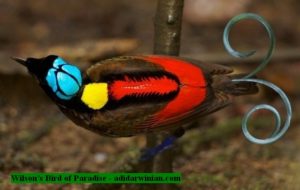 Another mysterious piece of information about the birds of paradise was revealed to the world by Mr. William Funnell during his voyage round the world in 1703-1706. The voyage ship used was the St George commanded by Captain William Dampier. Mr. William Funnell accompanied Captain William Dampier as his chief mate. The St George ship left for the South Seas in 1703 from London with Captain William Dampier, Mr. William Funnell, and other crew members. Although this voyage was started by Dampier and Funnel, the circumnavigation was completed only by Funnell. On 26th January, 1705, St George ship anchored at the Gulf of Amapalla or Amapala7. On 1st February, 1705, Mr. William Funnell along with thirty five members left the Gulf of Amapala without Captain Dampier. Captain Dampier along with twenty eight men and boys remained in the St George ship at the Gulf of Amapala.
Another mysterious piece of information about the birds of paradise was revealed to the world by Mr. William Funnell during his voyage round the world in 1703-1706. The voyage ship used was the St George commanded by Captain William Dampier. Mr. William Funnell accompanied Captain William Dampier as his chief mate. The St George ship left for the South Seas in 1703 from London with Captain William Dampier, Mr. William Funnell, and other crew members. Although this voyage was started by Dampier and Funnel, the circumnavigation was completed only by Funnell. On 26th January, 1705, St George ship anchored at the Gulf of Amapalla or Amapala7. On 1st February, 1705, Mr. William Funnell along with thirty five members left the Gulf of Amapala without Captain Dampier. Captain Dampier along with twenty eight men and boys remained in the St George ship at the Gulf of Amapala.
On 28th May, 1705 Funnell reached the Island of Amboina or Amboyna (the part of the Maluku Islands or Spice islands of Indonesia). In his description of the voyage, Mr. Funnell wrote that the birds of paradise were about the size of pigeons. They were never seen alive in Amboina, and it was not known where the birds used to come from. He said that he had seen several of them preserved in spice. In this preserved state they were sent as rarities or rare commodities to several parts of the world. The birds of paradise were said to resort when the nutmegs were ripe, in the months of February and March, to Amboina and Banda5. At these islands, they ate the outer rinds of nutmegs, which intoxicated or stupefied them and they fell to the ground as if senseless or dead drunk. The inactive bodies of these birds lied on the ground as a great feast waiting to be relished until the ants got notice of them. The ants killed and eagerly ate those dead birds.
Carl Linnaeus (Carolus Linnæus), in 1760, named the largest species as Paradisea apoda (the footless paradise bird). At that time no perfect specimen had been seen in Europe. Many years afterwards, it was found that the feet of bird had been cut off and buried, and the bird was killed by the superstitious natives as an appeasement or propitiation to the gods. Due to the feet-cutting acts of the natives, these birds were thought to exist naturally without feet. Thus, it was assumed that these extraordinarily beautiful birds spent their lives in the air, drinking dew and never landing on ground until death. It was because of the above stated misconception and their unrivaled gorgeousness that the notion aroused that these avian creatures came from the heaven, and hence, these birds were called as the Birds of Paradise. Paradisea apoda is also called as the Greater Bird of Paradise. The great naturalist, Alfred Russel Wallace8 (1823 – 1913) was the first scientific observer of the living birds of paradise. The Malay Archipelago: The Land of the Orangutan and the Bird of Paradise is one of the greatest books on biology that was authored by Alfred Russel Wallace in 1869. In this book, Wallace tells that the regions of the Malay Archipelago1 abound with plants and animals which are unknown elsewhere. There thrives most precious of the spices, richest of the fruits, giant flowers of Rafflesia2, the great green-winged Ornithoptera3, the man-like Orangutan, and the exquisite birds of paradise. Wallace adds that these regions are inhabited by a peculiar race of mankind, the Malay, which is found nowhere else, and has therefore, been named as the Malay Archipelago1.
The great naturalist, Alfred Russel Wallace8 (1823 – 1913) was the first scientific observer of the living birds of paradise. The Malay Archipelago: The Land of the Orangutan and the Bird of Paradise is one of the greatest books on biology that was authored by Alfred Russel Wallace in 1869. In this book, Wallace tells that the regions of the Malay Archipelago1 abound with plants and animals which are unknown elsewhere. There thrives most precious of the spices, richest of the fruits, giant flowers of Rafflesia2, the great green-winged Ornithoptera3, the man-like Orangutan, and the exquisite birds of paradise. Wallace adds that these regions are inhabited by a peculiar race of mankind, the Malay, which is found nowhere else, and has therefore, been named as the Malay Archipelago1.
In this book, Wallace wrote that even at the time of his exploration of the birds of paradise, most books still stated that these birds migrated annually to Banda, Amboina, and Ternate (Ternate is an island in the Moluccas). Wallace further stated that, on the contrary, the fact was that these avian creatures were totally unknown, in the wild state, in those Maluku islands as they were in England. Wallace wrote that Linnaeus also studied a small species, which he named as Paradisea regia (the King Bird of Paradise). Wallace further added in his book that since the nomenclature of Paradisea regia, nine or ten other species had been named, and all of these species were first described from the skins preserved by the savages or barbarians of New Guinea4. Wallace wrote that at his time of exploration of these birds, all of these birds were known in the Malay Archipelago1 as “Burong coati,” or dead birds, revealing that the Malay traders never saw them alive. Alfred Russel Wallace was the first scientific writer and the first scientific observer of the living birds of paradise. He gave a splendid account of these birds in his eternal book – The Malay Archipelago.
The latest noteworthy books on the birds of paradise include Drawn from Paradise: The Natural History, Art and Discovery of the Birds of Paradise with Rare Archival Art (2012) by Sir David Attenborough9, and Birds of Paradise: Revealing the World’s Most Extraordinary Birds (National Geographic Books, 2012) by Tim Laman and Edwin Scholes.
Additional Interesting Information:
1. Malay Archipelago (Archipelago is a term used for a large group or chain of islands, and Malay in Malay Archipelago denotes the Malay race) refers to an extensive group of islands in the Indian Ocean and Pacific Ocean between Southeastern Asia and Australia. It is the largest group of islands (archipelago) in the world by area. It includes Indonesian islands (Greater Sundas, Lesser Sundas, Moluccas, and western New Guinea), islands of the Philippines, Singapore, East Malaysia (also called Malaysian Borneo and consists of the states of Sabah and Sarawak), Brunei, Timor (East Timor / Timor-Leste and Indonesian West Timor), and Papua New Guinea (the eastern half of New Guinea).
2. Rafflesia arnoldii (corpse flower) is a rare and parasitic plant and has the largest individual flower in the world. It is found in the Southeast Asian islands of Sumatra and Borneo; both of these islands are part of the Malay Archipelago.
3. Genus Ornithoptera consists of birdwing butterflies. Ornithoptera alexandrae (Queen Alexandra’s Birdwing) is the largest butterfly in the world. It occurs in Papua New Guinea.
4. New Guinea is the second largest island of the world and is located north of Australia in Pacific Ocean. Papua New Guinea forms the eastern half of New Guinea whereas western part is under the control of Indonesia.
5. Banda Islands are a group of ten small volcanic islands located in the Banda Sea and are part of the Maluku Islands of Indonesia.
6. Ferdinand Magellan (1480-1521), who was a Portuguese explorer, in order to sail around the world and to find a new way to the Spice Islands started the expedition of circumnavigation of the earth in 1519 from Spain, with five ships including the Victoria. Magellan died, in 1521, before completing the expedition. Only one ship (Victoria) under the command of Juan Sebastián Elcano, out of the five ships, sailed around the earth back to Spain on September 6, 1522. The ship brought spices and dried skins of the birds of paradise from the Malay Archipelago.
7. Amapala Island or the Island of La Tigre or Isla de la Tigre or Tigre Island or El Tigre Island is a high, inactive volcanic island in the Gulf of Fonseca / Golfo de Fonseca.
8. Click to learn more about Alfred Russel Wallace.
9. Sir David Attenborough is a well-known British naturalist, writer, and natural history film-maker. He is known for his landmark wildlife programs on television. To watch Sir David Attenborough live click this Rare Yet Real Video!!


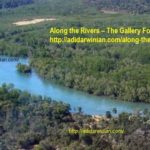
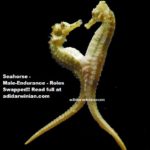
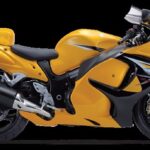
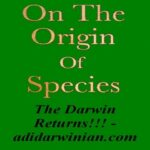

Wow! This is an awesome research work on birds.
This article covers the mystery of the Heavenly Beauty of The Birds of Paradise!!
This write-up offers Awesome Information on birds with Heavenly Beauty- The Birds of Paradise!!
A marvelous research work!
Well this article is worth reading hundreds of books.
Thanks for the post.
At last a mystery is solved – Thanks!
I very much agree
Pingback: A Man Who Played a Pivotal Role in Solving the Mystery of Life | adidarwinian
I was really confused that why these birds are called Birds of Paradise – Thanks you have answered this grand question
I think you have cleared all the doubts behind the mystery of birds of paradise!